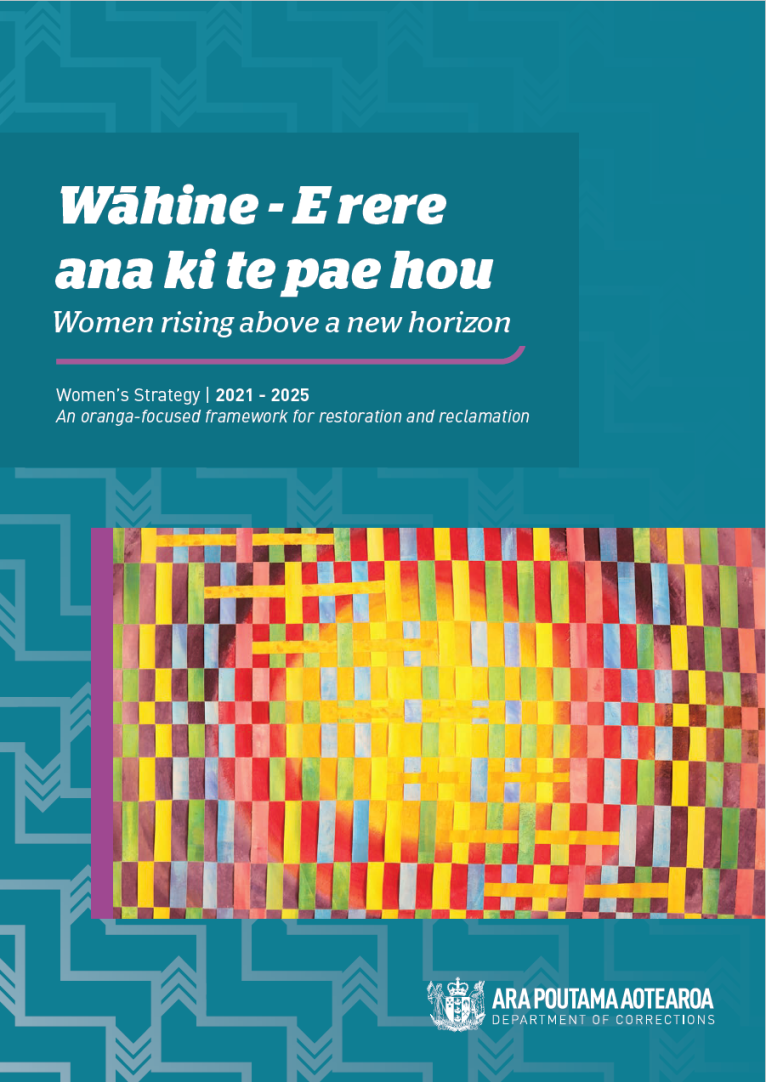Wāhine: E Rere Ana Ki te Pae Hou Women's Strategy 2021 - 2025

Wāhine - E rere ana ki te pae hou
View Wāhine – E rere ana ki te pae hou: Women’s Strategy 2021 – 2025 PDF, 1.6 MB
Overview
If asked to reflect on prison and prisoners, we are likely to conjure up images that depict an entirely masculine world. Yet the experience of prison is highly gendered.
In 2017, Corrections launched its inaugural Women’s Strategy - Wāhine – E rere ana ki te pae hou. This was a guide for all parts of our organisation to think differently about the needs and services provided to the women in our management. We have made good progress over the past four years, but there is still much to do.
Factors such as poverty, peer influences, parental neglect, families with criminal associations, and impulsive personality traits continue to affect both men and women who offend. However, pathways to offending differ between the two, with evidence showing that, in general, women commit less serious crime and pose a lower risk to the community than men.
Women’s pathways to offending commonly stem from experiences of trauma – we know from what women are telling us that this includes individual events or experiences, and, for wāhine Māori, intergenerational trauma stemming from colonisation. Departmental research indicates three quarters of women in New Zealand’s prisons have been victims of family violence, rape and/or sexual assault as a child or adult.4 In addition to these traumatic experiences, women are more commonly affected by:
- mental health issues including high rates of post-traumatic stress disorder, comorbidity, and substance addictions that mask and manage their trauma
- financial pressures stemming from low educational achievement, being from economically disadvantaged backgrounds, un- or under-employed, and recipients of state benefits
- parenting difficulty and stress associated with difficult relationships, poor physical and mental health, and child custody issues.
Experience also tells us that the pathway into prison is different for women than it is for men, with the decision to be remanded in custody by the Courts generally occurring after a higher number of breaches or offending. This is due to the range of factors a judge must consider, including the direct impact a woman’s imprisonment may have on whānau. Equally, there are often unique challenges, including the potential for violence in the home, that can affect a woman’s ability to meet their bail conditions.
The inaugural strategy was launched at a time when the number of women in prison, particularly wāhine Māori, was at an all-time high. Despite a steady decrease since in the overall number of women in the corrections system – both in prison and in the community – the overrepresentation of wāhine Māori continues. This strategy aims to reduce reoffending through gender and culturally responsive programmes and services that provide holistic support. It will also achieve this by ensuring our workforce, at all levels, works in ways that respond to the unique needs of women.

